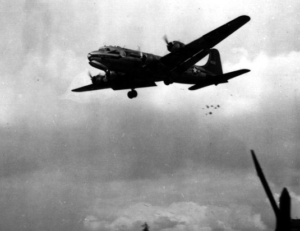
In early 1945, the combined air power of the Allied forces had laid waste to Berlin. Tens of thousands of tons of allied ordnance had fallen on the crippled city, turning the once majestic German capital into a smoldering pile of ruins.
The wrath of RAF Bomber Command first, and the American Eight Air Force during the latter half of the war pounded the city mercilessly, exacting fiery retribution against the Nazi regime.
By May 1945, Nazi Germany had finally capitulated, after a long and costly 6 year struggle for dominance in the continent. Representatives of the decimated German Army sign an unconditional surrender on May 7. The war has officially ended. The arduous task of rebuilding Berlin, and Germany as a whole, would take decades.
In the immediate aftermath of the conflict, few buildings remained standing. Much of the city had been turned into rubble. Well over 600,000 dwellings had been flattened, and from an estimated 4.3 million population, only 2.3 could be accounted for. The rest, either dead, or missing. The entire civilian infrastructure was largely gone. Water, electricity, and other facilities had pretty much been obliterated in an effort to paralyze the German war effort.
The victorious factions soon begin slicing the German capital. Berlin is divided into British, American, French, and Soviet sectors of occupation, effectively establishing an East/West border and sowing the seeds of the Cold War.
In 1946, the Soviet sector of occupation and East Berlin become unified, a move which sparks outrage among the other three nations.
By 1948, Berlin simmers with hostility between the Western powers and the Soviet-controlled territory. A dispute over currency reforms sparks a Soviet blockade of the Western sectors, the first of many major crises of the impending Cold War. The rationale behind this blockade was to deny the Western powers vital rail, canal, and road access, thus granting the Soviet nation effective control over the entire city of Berlin. Food and supplies soon become scarce.
The Allied nations respond by organising Operation Vittles, also known as the Berlin Airlift. Its goal: to supply the Western sectors with food, coal, and other necessities. Aircraft from the United States, Canada, Great Britain, Australia, South Africa, and New Zealand air forces take part in this operation. Over 200,000 sorties take place, and more than 4,700 tons of supplies are airlifted into the Western sectors of the city.
The airport at Tempelhof district would become the logistical hub for Operation Vittles. Pilots soon realized however that the grass runways, typical of German airports at the time, clearly could not handle the heavily laden aircraft landing there. A perforated steel matting runway was built in an attempt to solve the issue, but it soon began crumbling under the weight of the gigantic Allied transport planes. Engineers were forced to build a proper 6,000 feet runway to meet the demand.
During Operation Vittles, USAF Col. Gail Halvorsen would give rise to one of the most poignant and endearing (and also, little known) stories of World War II.
Col. Halvorsen, aged 27 at the time, piloted C-47 and C-54 transport aircraft as part of the Berlin Airlift effort. When landing at Tempelhof, Halvorsen often noticed children lingering at the airport’s perimeter fence, watching the aircraft and all the airport activities. Soon, he came up with an idea, and put it forward to his commanding officer, Lt. General William Tunner. The idea? To drop candy from his airplane to the children below, using parachutes. Tunner approved, and christened it Operation Little Vittles.
Halvorsen was well aware that German kids had next to nothing in the post-war era. The Soviet blockade had severely limited access to supplies, and while the airlift that he and so many others were part of was slowly balancing the situation, the German population -and kids in particular- living in the Western sectors were suffering deprivation. Thus, he hoped his actions would at least help to raise morale a little.
At the height of the airlift, aircraft would land at Templehof every 3 minutes, hence children would have no way of knowing which airplane Halvorsen was piloting. To resolve this problem, he promised the children that he would swing the wings of his aircraft on approach, so they would know candy was about to be parachuted their way. This would earn Halvorsen the nickname “Onkel Wackelflügel” (“Uncle Wiggly Wings”).
The American pilot’s initiative took off. When word of what he was doing got around, other aircrews began imitating him. Soon, candy was landing all over Berlin, thus giving children a very sweet indeed ray of hope. All the participating aircrews became collectively known as The Candy Bombers. School pupils all over the United States also began contributing to the effort by packing candy, rations, and other much needed supplies for the German kids. All in all, over 18 tons of candy would be dropped on Berlin.
Gail Halvorsen, still alive today, would go on to become an iconic figure in post-war Germany, and far beyond. He single-handledly improved the German population’s perception of the American army, and of the United States in general, after the bitter animosity displayed between the two nations only a few years earlier. Even today, the original candy bomber is still dearly remembered and sporadically mentioned in German media as a symbol of American-German relations.
Some of the children who received Halvorsen’s candy gifts appeared numerous times on German TV as adults, along with Halvorsen himself, celebrating the anniversary of the life-changing airlift, and the experience as a whole. Much later, other aircrews airdropped teddy bears and other toys to Iraqi children during the first Gulf War, honouring Halvorsen’s far-reaching legacy.



